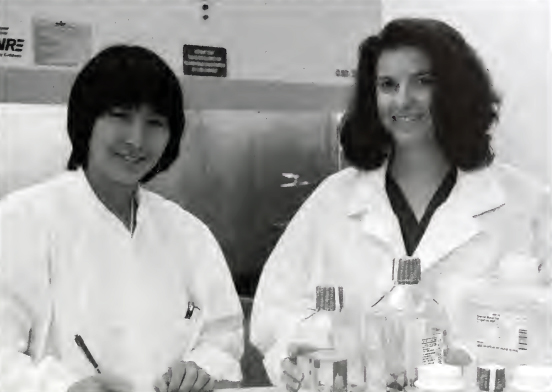Content on this webpage is provided for historical information about the NIH Clinical Center. Content is not updated after the listed publication date and may include information about programs or activities that have since been discontinued.
Clinical Center’s Cell Processing Section leads in islet cell isolation

The Clinical Center’s Department of Transfusion Medicine is once again at the forefront of exciting new clinical research as its Cell Processing Section (CPS) prepares islet cells for transplantation in an effort to cure diabetes.
Canadian researchers made headlines last month when they reported successfully transplanting insulin-producing islet cells into eight patients with diabetes, freeing them from daily insulin shots.
The CPS is working hand-in-hand with NIDDK researcher Dr. David Harlan to replicate and improve upon the Canadians’ work here at the Clinical Center.
However, according to Dr. Harlan, “Islet isolation is not simple. There are a lot of variables to consider.”
It all starts with a donor pancreas.
Islet cells are clustered in ducts deep within the organ and make up only about 2 to 3 percent of its cellular mass. Extracting the islets requires a 6-hour procedure and three CPS technologists working simultaneously in a sterile environment.
In brief, fat is trimmed off the pancreas, and an enzyme called collagenase is pumped into the ducts. The enzyme digests away the connective tissue that comprises most of the pancreas. To aid the breakdown process, the tissue is also placed in a stainless steel chamber full of marbles and agitated back and forth. As the islet cells are released, they are further separated and washed.
The result is a volume of pure islet cells ready for transplantation into the patient’s liver via the portal vein. This will be done in the Diagnostic Radiology Department’s Special Procedures Lab. Once imbedded in the liver, the islet cells appear to produce insulin in response to blood sugar levels, according to the Canadian team’s report.
Already skilled in cell-processing techniques, CPS lead technologists Janet Lee and Ken Hines visited experts at the University of Miami in early 1999 to learn the basics of islet isolation.
They carried their new knowledge back to the Clinical Center, and set to work modifying their lab to do islet isolations for Dr. Harlan’s original protocol, which planned to test an antirejection drug called anti-CD 154. That study was shelved when the drug was found to cause blood clots.
Dr. Harlan retooled his approach to replicate the Canadian team’s work, and Lee and Hines recently visited the Canadians to see exactly how they do their isolations. The CPS team has processed more than 20 pancreata so far, and they are ready to move forward with a clinical application.
The cell processing facility opened in 1997 with the goals of developing and improving procedures for collecting, modifying, growing, and preserving human cellular components. The facility was designed to meet the Food and Drug Administration’s regulatory requirements for a biologies production facility. A biologic is a treatment derived from a living organism, for example, a vaccine. Islet cells fall into this category.
“The isolation process is very labor intensive, and one of our goals is to streamline and automate parts of it,” said CPS chief Dr. Elizabeth Read. She also pointed out that each pancreas yields different amounts of islets. Additional research goals include standardizing the “dose” of islets and developing ways to predict the amount of insulin they might produce once in the body.
Other CPS staff involved in this work include section supervisor Charley Carter, Sue Ellen Frodigh, Larry Moses, Chauha Pham, Angela Pickett, and Hoi May Wong. Three technologists are on call 24 hours a day, because a pancreas can arrive at any time.
“Their expertise, attention, and effort put together the islet isolation unit. They bring a squared-away, regulatory mindset to the process that a clinician might not have,” said Dr. Harlan.
“Only eight patients in the world have had this therapy work, and none of them have been in the United States. It is still very experimental. NIH will be one of the first institutions to try this therapy in humans,” said Dr. Harlan.
His new protocol is in review. He hopes to study up to 20 patients. And CPS will be with him every step of the way.
-by Sue Kendall

